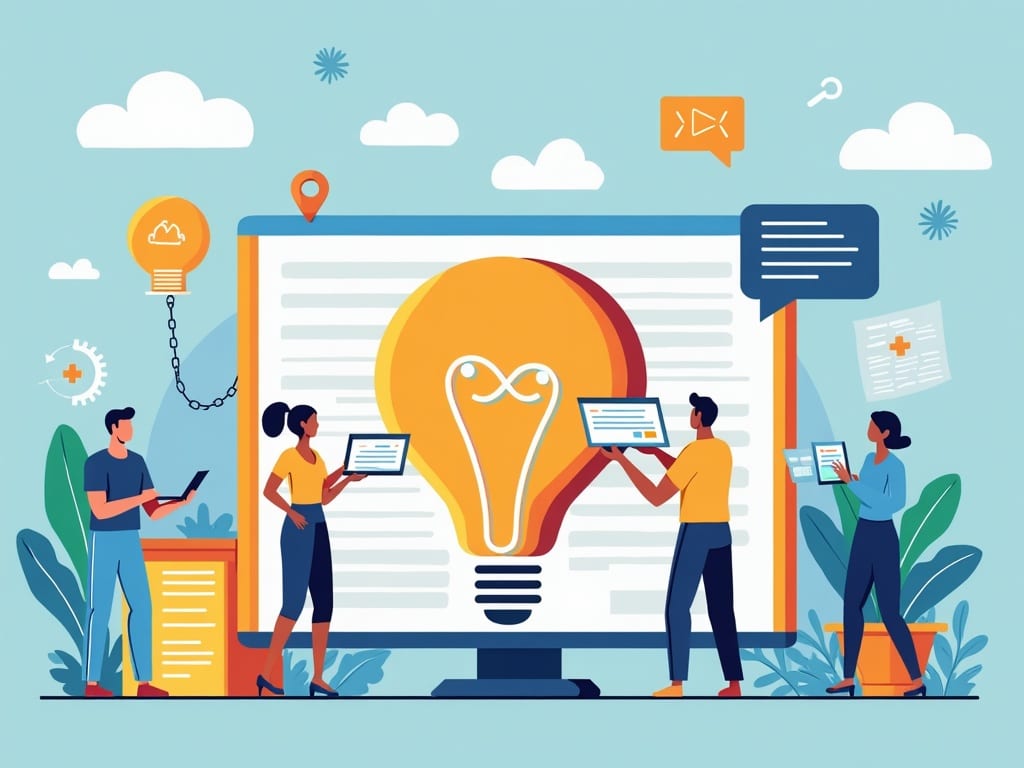What To Do After Customer Discovery: A Practical Guide
Imagine the thrill of striking gold after a long, arduous search. That's the feeling you get after completing customer discovery. You've unearthed valuable insights about your target audience, their needs, and their pain points. But what comes next? Many entrepreneurs stumble at this crucial juncture, unsure how to translate those findings into a viable business. This comprehensive guide will equip you with actionable steps to navigate the landscape *aftercustomer discovery, transforming raw data into a thriving product or service.
Synthesizing Your Customer Discovery Findings
Congratulations! You've spoken to potential customers, conducted surveys, and analyzed data. Now, it's time to make sense of it all. This phase is not about cherry-picking data to confirm your initial assumptions (we all have them!), but rather about objective analysis and identifying true patterns.
1. Aggregate and Organize Your Data
Start by consolidating all your customer discovery data into a single, manageable repository. This could be a spreadsheet, a dedicated customer relationship management (CRM) system, or even a specialized customer discovery platform. Regardless of the tool, organize your findings consistently. Consider categorizing responses based on:
- Demographics: Age, gender, location, income, etc.
- Pain Points: Specific challenges, frustrations, and unmet needs.
- Jobs to Be Done: The underlying tasks or goals customers are trying to achieve.
- Desired Outcomes: What customers hope to gain by solving their problems.
- Existing Solutions: Tools or methods customers currently use (or have tried) to address these pain points.
- Willingness to Pay: How much customers are willing to spend for a solution.
2. Identify Recurring Themes and Patterns
Now, dive into the data and look for recurring themes. What pain points are mentioned most frequently? What jobs are customers consistently trying to accomplish? What outcomes do they value the most? Use data visualization techniques, such as charts and graphs, to highlight these patterns. Don't just focus on what customers *say*; pay attention to what they *doand how they behave.
3. Segment Your Customer Base
Not all customers are created equal. Customer discovery typically reveals distinct segments within your target audience, each with unique needs and characteristics. Identify these segments and create detailed customer personas for each. A customer persona is a semi-fictional representation of your ideal customer, based on research and data. Give them a name, a backstory, and specific goals. This will help you empathize with their needs and tailor your product or service accordingly.
Validating Your Problem-Solution Fit
With your customer segments clearly defined and your key findings synthesized, it's time to validate that your proposed solution truly addresses their needs. This is a critical step to avoid building a product that nobody wants.
1. Prioritize Pain Points
Not all pain points are created equal. Some are more pressing and impactful than others. Prioritize the pain points you uncovered during customer discovery based on their frequency, intensity, and the potential for your solution to alleviate them. Focus on the pain points that resonate most strongly with your target customer segments and that align with your business goals.
2. Refine Your Value Proposition
Your value proposition is a clear and concise statement that explains how your product or service solves your customers' problems and delivers value. Based on your customer discovery findings, refine your value proposition to ensure it accurately reflects the needs and desires of your target customer segments. Use their own language when describing the benefits of your solution.
3. Prototype and Test Your Solution
Don't wait until your product is fully developed to get feedback. Create a minimum viable product (MVP) – a basic version of your solution with just enough features to attract early adopters and validate your assumptions. This could be a simple landing page, a mock-up, a wireframe, or even a manual service. Test your MVP with real customers and gather their feedback. Iterate on your solution based on their input.

4. Conduct User Testing
Beyond general feedback, conduct user testing to observe how customers interact with your MVP. Identify any usability issues, areas of confusion, or features that are not well-received. Use tools like heatmaps and session recordings to gain a deeper understanding of user behavior. This will help you refine your user interface (UI) and user experience (UX) to create a product that is intuitive and enjoyable to use.
Developing Your Business Model
Customer discovery not only validates your problem-solution fit but also provides valuable insights for developing a sustainable business model. Understanding your customers' willingness to pay, their preferred channels, and their purchasing habits is crucial for crafting a profitable business.
1. Define Your Revenue Streams
How will you generate revenue from your product or service? Explore different revenue models, such as:
- Subscription: Recurring payments for access to your product or service.
- Freemium: Offer a basic version for free and charge for premium features.
- Transaction-based: Charge a fee for each transaction or use of your product.
- Advertising: Generate revenue through advertising on your platform.
- Licensing: Grant others the right to use your technology or intellectual property.
Choose a revenue model that aligns with your customer's needs and preferences. Consider their willingness to pay for different features and functionalities.
2. Determine Your Pricing Strategy
Pricing is a critical factor in your business's success. Set a price that is both attractive to customers and profitable for your business. Consider factors such as:
- Cost of Goods Sold (COGS): The direct costs associated with producing your product or service.
- Operating Expenses: The costs of running your business, such as rent, salaries, and marketing.
- Competitive Pricing: The prices charged by your competitors for similar products or services.
- Value-Based Pricing: Pricing based on the perceived value of your product or service to the customer.
Experiment with different pricing strategies to find the sweet spot that maximizes revenue and customer satisfaction.
3. Identify Your Key Metrics
What key performance indicators (KPIs) will you use to measure the success of your business? Define metrics that are relevant to your business goals and that can be tracked and measured. Examples include:
- Customer Acquisition Cost (CAC): The cost of acquiring a new customer.
- Customer Lifetime Value (CLTV): The total revenue you expect to generate from a customer over their lifetime.
- Churn Rate: The percentage of customers who stop using your product or service over a given period.
- Conversion Rate: The percentage of website visitors who become customers.
- Net Promoter Score (NPS): A measure of customer loyalty and willingness to recommend your product or service.
Track your KPIs regularly to monitor your progress and identify areas for improvement.
Iterating and Scaling Your Business
The journey doesn't end with the launch of your product or service. Continuous iteration and improvement are essential for long-term success.
1. Continuously Gather Customer Feedback
Customer feedback is the lifeblood of your business. Implement systems for continuously gathering feedback from your customers, such as surveys, user interviews, and feedback forms. Actively solicit feedback from both satisfied and dissatisfied customers. Use this feedback to identify areas for improvement and to inform your product roadmap.
2. Prioritize Features and Improvements
Based on customer feedback and your business goals, prioritize features and improvements for your product or service. Use a framework such as the RICE scoring model (Reach, Impact, Confidence, Effort) to evaluate and prioritize different features. Focus on the features that will have the greatest impact on your customers and your business.
3. Adapt to Changing Market Conditions
The market is constantly evolving. Stay abreast of industry trends, competitive landscape, and emerging technologies. Be prepared to adapt your product, your marketing, and your business model to meet the changing needs of your customers and the market.
4. Prepare for Scale
As your business grows, you will need to scale your infrastructure, your processes, and your team. Plan ahead for this growth by automating tasks, streamlining workflows, and hiring the right people. Invest in systems and tools that will support your growth and prevent bottlenecks.
Customer discovery is not a one-time event, but an ongoing process. By continuously listening to your customers, validating your assumptions, and iterating on your solution, you can build a thriving business that truly meets their needs. The path after customer discovery is paved with action, analysis, and adaptation – embrace it, and you’ll be well on your way to success.

